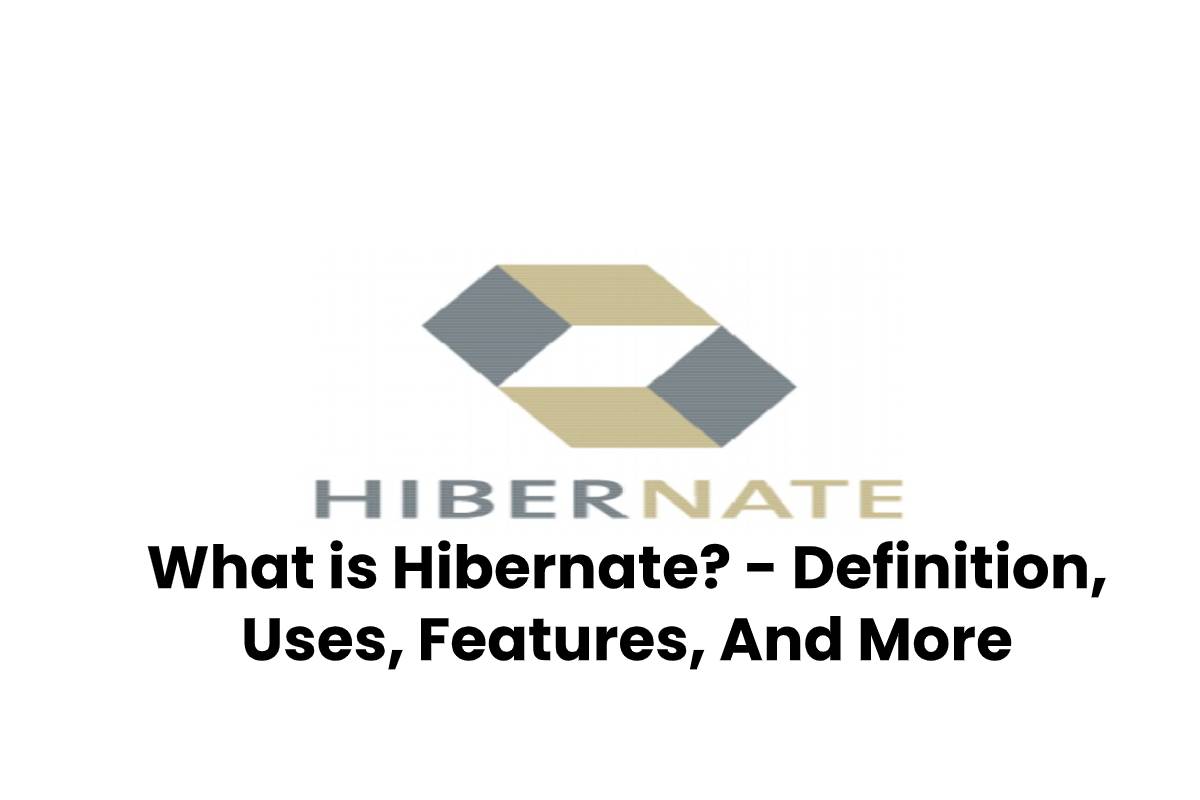

Unveiling Hibernate Core Concepts Features and More
Getting Cozy with Hibernate: A Quick Guide
Ever wondered what all the hype around Hibernate is for? Let’s cut to the chase and break it down in plain English, sprinkled with a dash of humor. Whether you’re a newbie or a seasoned coder, this walk‑through will keep you laughing (and learning) as you dive into one of Java’s most beloved ORM frameworks.
1. What Exactly Is Hibernate?
Think of Hibernate as a bridge that lets your Java applications talk to databases like they’re best friends—without all the awkward, low‑level SQL chatter. It translates your object‑oriented code into relational database operations, saving you time and reducing errors.
2. Why Should You Even Care?
- Save Time: Spaghetti SQL? No thanks. Hibernate auto‑generates queries for you.
- Keep It Readable: Your code stays cleaner, clearer, and less prone to typos.
- Flexibility: Swap between MySQL, PostgreSQL, or even H2 in-memory databases without rewriting logic.
3. Inside the Magic: How Hibernate Works
Picture this: You create a Java class, annotate it, and… poof! Hibernate knows how to store it in a table.
- Define Entity classes with annotations like
@Entity,@Table, and@Id. - Configure hibernate.cfg.xml or use Spring Boot’s
application.propertiesto tell Hibernate where to find your database. - Run the app—Hibernate’s SessionFactory opens a connection, and you can
save,update, ordeleteobjects without writing a single line of SQL.
Key Features to Love
- Lazy Loading: Load data only when you need it—helps with performance.
- Caching: Reduce database hits by caching frequently accessed data.
- Transaction Management: Handle commits, rollbacks, and roll‑backs without hassle.
- Batch Processing: Efficiently insert or update thousands of rows.
4. Keeping It Simple: Best Practices
- Use the Right Annotations: Keep your mappings clean—avoid excessive
@Columnusage when defaults will do. - Avoid N+1 Queries: Fetch relationships eagerly only when necessary.
- Keep Configuration Tight: Disable auto‑generate DDL unless you’re in a dev environment.
- Test, Test, Test: Write unit tests for your repositories—lazy bugs are notoriously sneaky.
5. Wrapping Up: Why Hibernate Isn’t Just a Fancy Tool
At its core, Hibernate is about developer happiness. It frees you from the dreaded SQL headache, lets you focus on the business logic, and, frankly, makes the whole database dance feel less like a chore and more like a jam session.
So gear up, get your coffee, and bring Hibernate into your project. Trust me—you’ll wonder how you ever did without it.
Definition Hibernate
What’s Hibernate, Anyway?
Imagine your Java application as a bustling city full of people (objects), and your relational database as a neatly organized library of shelves (tables). Hibernate is the friendly translator that lets those people comfortably hop onto the shelves without breaking a sweat.
It’s a Bridge, Not a Bell
Unlike having to shout “SQL!” every time you need data, Hibernate whispers the correct queries behind the scenes. It maps your Java beans to database tables through two easy‑going methods:
- XML – the classic way, where you write a few lines of markup to declare the relationships.
- Annotations – the modern twist, putting tiny tags right inside your Java classes.
Why You’ll Love It
Speed: Turbocharged
Once the bridge is built, your application talks to the database with laser‑focused efficiency. Forget the tedious manual crafting of SQL statements – Hibernate does it for you, and it does it faster than a caffeine‑fed rabbit.
Simplicity: Keep Calm
Even if you haven’t written a single line of serious SQL yet, Hibernate lets you play in a more “Java‑centric” sandbox. You only need the basics: a dash of SQL knowledge and a sprinkle of database awareness. Everything else? It’s a built‑in magic spell.
Flexibility: Your Own Style
Whether you’re a fan of clean XML files or prefer the modern annotation approach, Hibernate accommodates your style. It’s like choosing between a vintage vinyl and a streaming playlist – both play the same tune, but the glasses you pick will suit your vibe.
Future‑Proof: When Things Grow
As your project scales or you integrate a new persistence layer, Hibernate steps up like a seasoned coach. It adapts to new schemas, handles complex relationships, and keeps your codebase tidy.
In short, Hibernate is the MVP that turns your Java code into a roaring, harmonious partnership with your database—no more awkward conversations, just smooth, subtle navigation through the data universe.
Uses of Hibernate
Why ORMs Are the Real MVPs in App Development
Ever notice how every time you build an app, you end up juggling the same CRUD tasks—create, read, update, delete—for almost every data object? It’s like you’re stuck in a never‑ending loop of ABM (add, modify, balance). Without a solid tool to automate these routines, you’re basically giving yourself a highly tedious routine.
The Daily Grind of Persisting Data
- Define a class for each entity you want to store.
- Write code to insert, delete, update, and fetch that entity.
- Recreate the same code over and over for every new object.
And then, for that one special query you’ve got, you still have to write all the nitty‑gritty details by hand. It’s not only time‑consuming—it also opens the door to small mistakes that bite later.
Enter the ORM: Your Automated Workflow Wizard
Switching to an ORM (Object‑Relational Mapping) revolutionizes how you handle data persistence. By simply configuring it once:
- Your insert, delete, update, and fetch operations run automatically.
- You only focus on the unique, high‑impact queries that truly matter.
- Boilerplate code? Gone—because the ORM takes care of it.
The result? Less repetitive code, fewer bugs, and more time to actually innovate. Think of the ORM as the autopilot in your development journey—it handles the drudgery, allowing you to fly to the creative destination.
TL;DR
If you’re tired of rewiring the same CRUD logic for each data model, an ORM is your secret weapon. Configure it, let it do the heavy lifting, and spend your energy on the cool stuff: what your app actually does.
How does Hibernate work?
Mapping Your Class to a Database Table – Easy as Pie
Picture this: your developer sits down with a big‑screen user interface, flips open an XML file (or just drops a few neat annotations onto your Java class), and boom – each field in your class is now in lock‑step with a column in your database. No more tedious manual mapping or copy‑paste headaches.
Why It’s a Breeze
- Automation is the hero: Modern tools handle the heavy lifting so you can focus on building cool features.
- One line of annotation: Just sprinkle
@Column(name="your_column")over a field, and you’re done. - Maintainability made simple: Any changes in the class instantly reflect in the database schema.
How to Get Started
- Choose your style: XML for the traditionalists or annotations for the modernists.
- Define your columns: Map every class property to a table column through your chosen method.
- Run your framework: Tools like Hibernate or JPA turn those definitions into a live database schema.
And voilà! You’ve got a fully synchronized Java class and database table that’d make your future self tip‑toe across the office, thanking you for a life less cluttered with manual bookkeeping.
Features of Hibernate
Simplicity and Flexibility
A Friendly Guide to Runtime Configurations and Persistence Frameworks
What We’re Talking About
You’ll often find yourself juggling one configuration file at runtime, plus a little map for each of your apps.
It can be a classic Java `.properties` file or an XML.
A splinter of the programmer’s favorite “let’s code it directly” approach.
The Family of Persistence Options
| Feature | Traditional Approach | Hibernate Magic |
|---|---|---|
| Dependency on Container | Requires EJB or other heavy container | Works stand‑alone |
| Inheritance Requirement | Your domain objects must inherit from a special base | No special inheritance needed |
| Strict Semantics | You’ll enforce a rigid pattern | Free‑form, just map objects |
| Boxed in by Container | You’re tethered to the server environment | You’re independent, works anywhere |
The “Extra” Improvements
Quick Take‑away
“A lightweight library that doesn’t bite the bundle” — that’s basically what Hibernate delivers.







